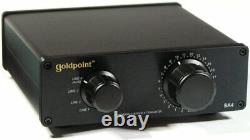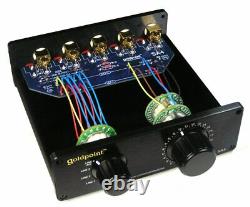
- Homepage
- Application
- Brand
- Accuair (26)
- Accuair Suspension (27)
- Airmaxxx (92)
- Audiocontrol (38)
- Autel (35)
- Autel Robotics (43)
- Chassis Tech (31)
- Cognito (45)
- Firebird Industrial (47)
- Flowline (32)
- Huepar (25)
- Hunter (25)
- Kryptonite (56)
- Launch (86)
- Mercedes-benz (91)
- Next Level Racing (26)
- Perfect Fit (20)
- Superlift (20)
- U`king (91)
- Zone Offroad (20)
- ... (2564)
- Item Height
- Item Length
- Material
- 100% Brand New (2)
- Abs (8)
- Abs Plastic, Copper (2)
- Abs+plastic (3)
- Abs, Plastic, Pvc (12)
- Alloy Steel (40)
- Aluminum (9)
- Glass (3)
- Iron (3)
- Kunststoff (2)
- Metal (34)
- Metal & Glass (12)
- Metal, Plastic (16)
- Plastic (47)
- Plastic Composite (17)
- Plastic, Metal (5)
- Polypropylene (6)
- Stainless Steel (21)
- Standard (2)
- Steel (16)
- ... (3180)
- Type
- Amplifier (9)
- Camera (12)
- Canister / Cylinder (14)
- Ceiling Fan (18)
- Console (17)
- Control Arm Kit (17)
- Controller (34)
- Dehumidifier (11)
- Drone Camera (22)
- Espresso Machine (15)
- Ground Search (10)
- Hearing Aid (12)
- Kit (72)
- Level Controller (17)
- Moving Head Light (17)
- Preamplifier (12)
- Tower (15)
- Trail Camera (10)
- Upright (29)
- Wet / Dry (23)
- ... (3054)
Goldpoint Sa4-47 Precision Stereo Passive Preamp





Expect the Goldpoint SA4-47 to easily outperform other passive preamplifiers. Clarity, transparency and precision, they also provide the flexibility of a selectable Auxiliary Input/Output. 100% passive, they were designed to improve sound quality while replacing (often unnecessary).
The SA4-47 has 47-position precision stereo stepped attenuator volume control. Goldpoint Mini-V stepped attenuators use low-noise, laser trimmed, thin film resistors, which along with yielding superior sound, also provide precision channel-to-channel signal level matching. Like the stepped attenuator, the selector switch has thickly plated hard-gold switch contacts, which ensures clean, noiseless signal connections. The SA4-47 is unique in that it allows the user to easily modify it's Line Input #4 to be either a Tape Output or a second Main Output (if you are bi-amping). No distortion is added to your signal path while performing level control.
Active preamps add in at. The 4-position selector switch allows level control for multiple signal sources.
The versatile AUX Input allows easy rewiring (2 internal wire jumpers) for alternate preamp functions. Low noise, excellent channel-to-channel signal level matching. SA4-47 Details: Input Impedance: 25K (Goldpoint Precision Stereo Stepped Attenuator, 47 position) Input Selection: Up to 4 selectable inputs. RCA Jacks: Gold-plated solid brass. Dimensions: 2.3" Tall x 6.2" Wide x 7.0 Long Weight: 1 3/4 lb.We do our best to make our customers happy. If you have technical questions, you may consult with our engineer and designer (ideally before ordering). There is also additional information on the website.
Thank you in advance for your consideration. About Passive Preamplifiers: Before 1980 many audio signal sources, such as tuners and tape decks, provided only about 1 or 2 volts of output. These needed to be preamplified before being connected to a power amplifier.
When CD players came into use in the mid 80's, they typically provided larger output voltages of about 2 to 4 volts. It was found that these larger output voltages allowed people to connect their new music source, the CD player, directly to their power amplifier. In most cases, all that was needed was the addition of some sort of volume control. A Passive Preamp is essentially an in-line volume control. Besides costing less than active preamps, passives can sound much better because they do not add additional circuitry into the signal path. No distortion is added to your audio signal. If you are really serious about great sound quality and already have adequate signal amplitude, a passive preamp may be very right for you.
